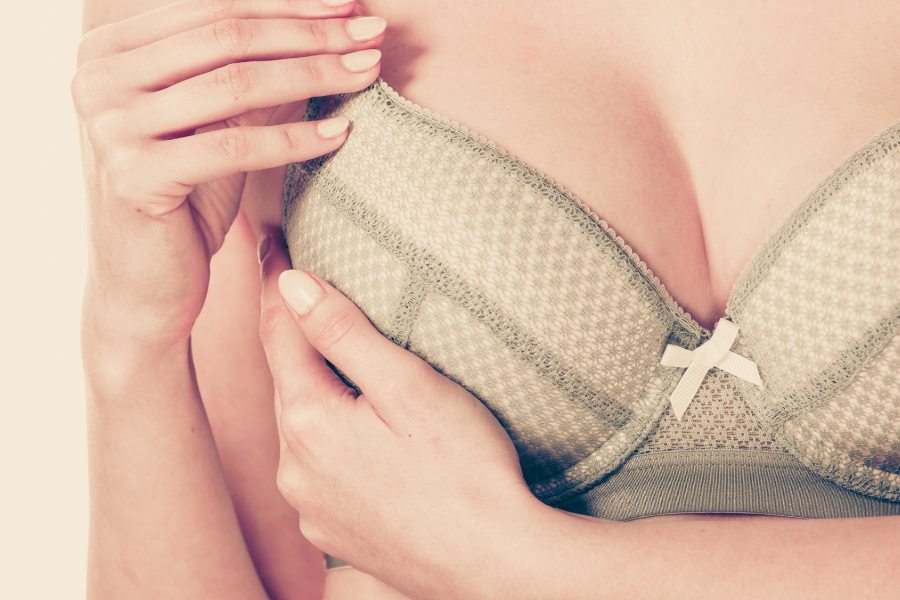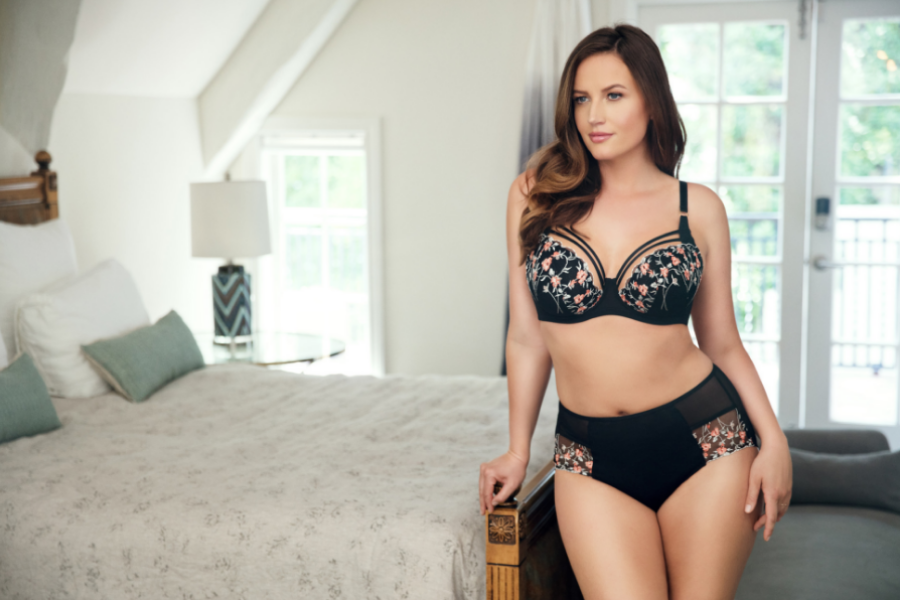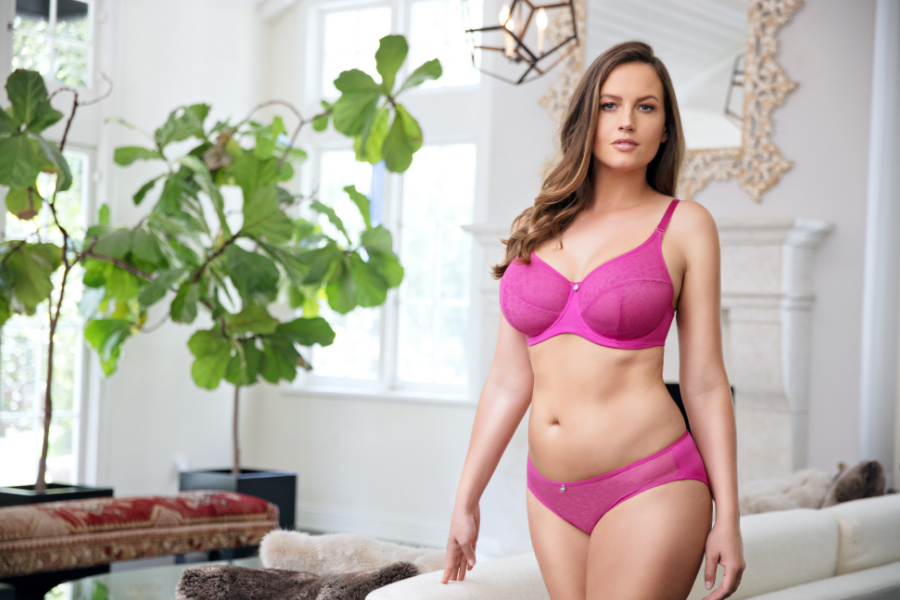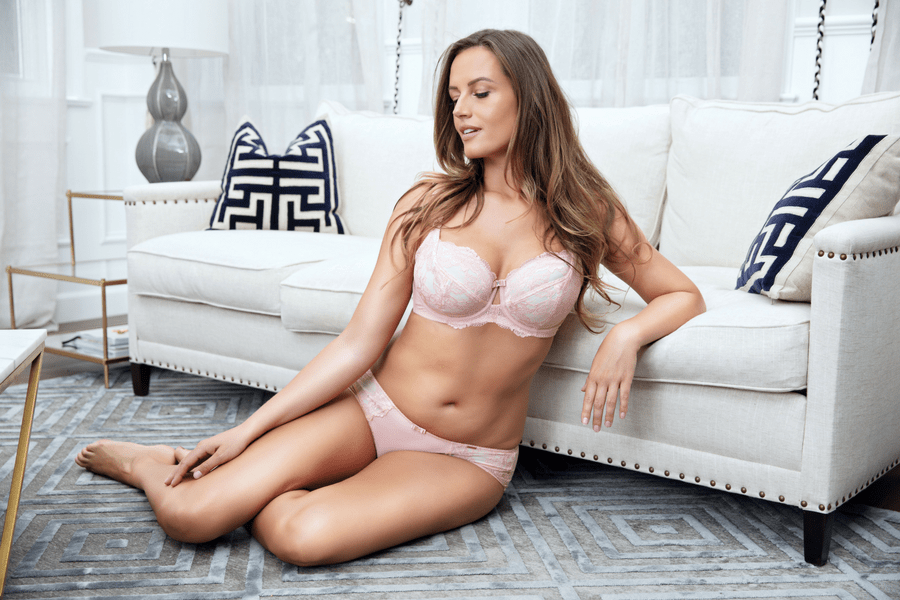4 Myths About Sagging Breasts, Busted
There’s a lot of myths floating around about sagging breasts, and we’re here to clear them up. But first, let’s dive into the realities of this issue. All woman face breast sagging, no matter what — it’s simply a natural process that comes with aging. Over time, the connective tissue in our breasts that help them maintain their shape (called the Cooper’s ligaments) gradually begin to stretch, causing the breast tissue to slowly go south. Moreover, during and after menopause, breasts begin to have a gradually higher concentration of fat (as opposed to breast tissue) due to hormonal shifts, which can leave them looking a little deflated and less than perky over time. So one truth about sagging is this: it’s totally normal, and it happens to everyone, no matter how much we may try to fight it.
Still, while you can’t totally prevent sagging, it’s important to separate the many myths from the facts so you can understand the measures you can take to slow down the process. Without further ado, here are some very common misconceptions about breast sagging, debunked.
Myth #1: Only large breasts sag.
Indeed, larger breasts may visibly sag more because they contain more tissue to droop downward. However, smaller breasts are still subject to gravity and can sag at the same rate. It all comes down to the makeup and density of your breasts. For example, breasts that are slightly larger but have more tissue than fat are less likely to sag than smaller breasts that contain more fat compared to tissue. The bottom line: No matter your breast size, you are not immune to gravity and the effects of aging.
Myth #2: Breastfeeding causes sagging.
This is a super popular and persistent myth, but the reality is, it doesn’t matter whether you breastfeed or not. While pregnancy could put you at risk for sagging if you experience a dramatic/rapid weight gain and then weight loss after giving birth, breastfeeding hasn’t been proven to have an impact on whether your boobs droop or not. In fact, a 2008 study published in the Aesthetic Surgery Journal revealed that breastfeeding cannot be considered a risk factor for breast ptosis (AKA sagging).
Again, pregnancy can potentially be to blame for some sagging, however. The more weight that is gained, the larger the breasts become, causing the ligaments and skin supporting them to stretch out — and that’s why they are more likely to droop when their size decreases.
Related: How To Buy The Right Nursing Bra Size
Myth #3: Exercises can prevent sagging.
This is a complicated one. Many women believe that if they engage in more chest exercises, they can strengthen those muscles enough to keep their breasts from sagging. Unfortunately, breasts don’t contain muscle. Therefore, no matter how many chest workouts you do, they will still inevitably droop somewhat over time (again, due to aging). That doesn’t mean those dumbbell flyes, chest presses, and pushup are for nothing, though! Strengthening those muscles in the chest, which are underneath the breasts, can potentially help to make them look a bit perkier and lifted.
Myth #4: There’s nothing you can do to stop it.
It may seem like since sagging is inevitable, there’s not much you can do. In reality, though, there are measures you can take to at least slow the process down.
For example, studies have shown that smoking is more likely to have a negative impact in regards to breast drooping. This makes sense when you consider that smoking can contribute to the breakdown of elastin (which is responsible for not only supporting the breast tissue but making skin look plump and firm). Other factors that can break down elastin and collagen, thus possibly accelerating the sagging process, include soaking up too much sun without protecting the skin on your breasts, as well as drinking excess alcohol. Avoiding all of these behaviors can certainly help you to prevent premature sagging. Additionally, keeping your weight stable will make sagging less likely, as weight fluctuation in your breasts stretches out the connective tissue and skin, which can be detrimental in the long run.
Also, wearing a supportive sports bra is key to warding off early sagging — especially if you engage in high-impact workouts. Sports bras that combine encapsulation and compression, featuring an adjustable band and straps as well as separated cups and a sturdy underband will help to control bounce during your workouts and minimize any strain on the ligaments that keep your breasts perky.
In sum, sagging is not totally avoidable. However, there are some behaviors you can avoid to keep your breasts looking lifted for as long as possible. And if you’re noticing that your breasts are going south, don’t fret — there are bra styles designed specifically to lift the breast tissue upward, like push-up bras.
Related: A 3-Step Guide To Buying The Perfect Sports Bra
We Highly Recommend
Whether you’re shopping for new everyday bras or lingerie for a special occasion, it’s always a good idea to seek out a second opinion. We know how hard it is to find bras that fit well and feel good, especially when you’re doing it on your own. If you’ve ever felt unsure about your bra size or you just don’t know where to go to find good bras, it’s time to let a bra fitter help.
Many specialty lingerie boutiques offer bra fittings. Their expert bra fitters will take the pain and frustration out of bra shopping and do all the work for you. Even better, their product knowledge can save you time and money. Plus, they know where all of the best bras are hiding.
If you’ve struggled with finding bras in the right size, it’s time to make a change. Visit our specialty store locator to find a store near you and schedule an appointment.
Happy bra shopping!






